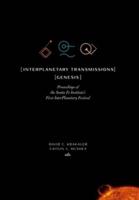Publisher's Synopsis
The Earth Observing System (EOS), the centerpiece of NASA's Earth science program, is a suite of spacecraft and interdisciplinary science investigations dedicated to advancing our understanding of global change. The flagship EOS satellite, Terra (formerly EOS AM-1), scheduled for launch in July 1999, will provide key measurements of the physical and radiative properties of clouds; air-land and air-sea exchanges of energy, carbon, and water; trace gases; and volcanoes. Flying in formation with Terra, Landsat 7 will make global high spatial resolution measurements of land surface and surrounding coastal regions. Other upcoming EOS missions and instruments include QuikSCAT, to collect sea surface wind data; the Stratospheric Gas and Aerosol Experiment (SAGE III), to create global profiles of key atmospheric gases; and the Active Cavity Radiometer Irradiance Monitors (ACRIM) to measure the energy output of the Sun. The second of the major, multi-instrument EOS platforms, PM-1, is scheduled for launch in 2000. Interdisciplinary research projects sponsored by EOS use specific Earth science data sets for a broader investigation into the function of Earth systems. Current EOS research spans a wide range of sciences, including atmospheric chemistry, hydrology, land use, and marine ecosystems. The EOS program has been managed since 1990 by the Goddard Space Flight Center in Greenbelt, Md., for NASA's Office of Earth Science in Washington, D. C. Additional information on the program can be found on the EOS Project Science Office Web site (http: //eospso.gsfc.nasa.gov). Goddard Space Flight Center NASA/NP-1999-02-022-GSFC, NAS 1.83:02-022-GSFC












